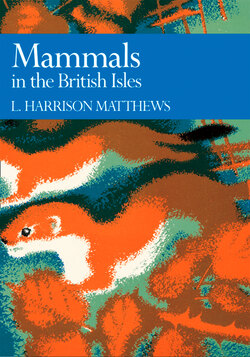Читать книгу Mammals in the British Isles - L. Harrison Matthews - Страница 8
ОглавлениеEDITORS’ PREFACE
IT IS NOW over 30 years since Dr Matthews wrote his British Mammals, which was No. 21 in the New Naturalist series. The Editors then described it as ‘the most important book on British mammals that has ever been published, bringing together as it does an enormous number of facts into a new synthesis’. The reviewers and our public fully endorsed this opinion, and the book has been a continuing success ever since it was published. It is still the most useful volume in its field, and owners of copies will treasure them on their shelves, and make use of them in their studies, for many years to come.
British Mammals, when it was published, was topical and very up to date, bringing together the results of Dr Matthews’ own observations and the research of many other mammalogists. Since then the subject has made great progress, often stimulated by Dr Matthews’ own writings. As a result there was need for considerable addition to the original text, even though there was little that newer investigations had shown to require correction. British Mammals was already a long book, though every word of its text was interesting and worth reading. Further extensions and revisions would have produced a volume which, in today’s circumstances, would have been so expensive as to have been out of reach of many of those for whom it was intended – ‘the general reader interested in wildlife’.
It was for this reason that we persuaded Dr Matthews to produce an entirely new book. It is in no way a revision of the 1952 publication. Although considerably shorter than its predecessor, it covers all facets of the life of the mammals of the British Isles. Like others in this series, it is not a text book. Several admirable volumes of this nature are now available; this has made it possible to reduce the description of the species to a minimum. Once more the author has produced a synthesis of modern knowledge, which treats mammals as living creatures, living in and adapted to their environment. We are confident that it will meet a real need of today’s readers, and that it is a worthy successor to the author’s previous volume.
